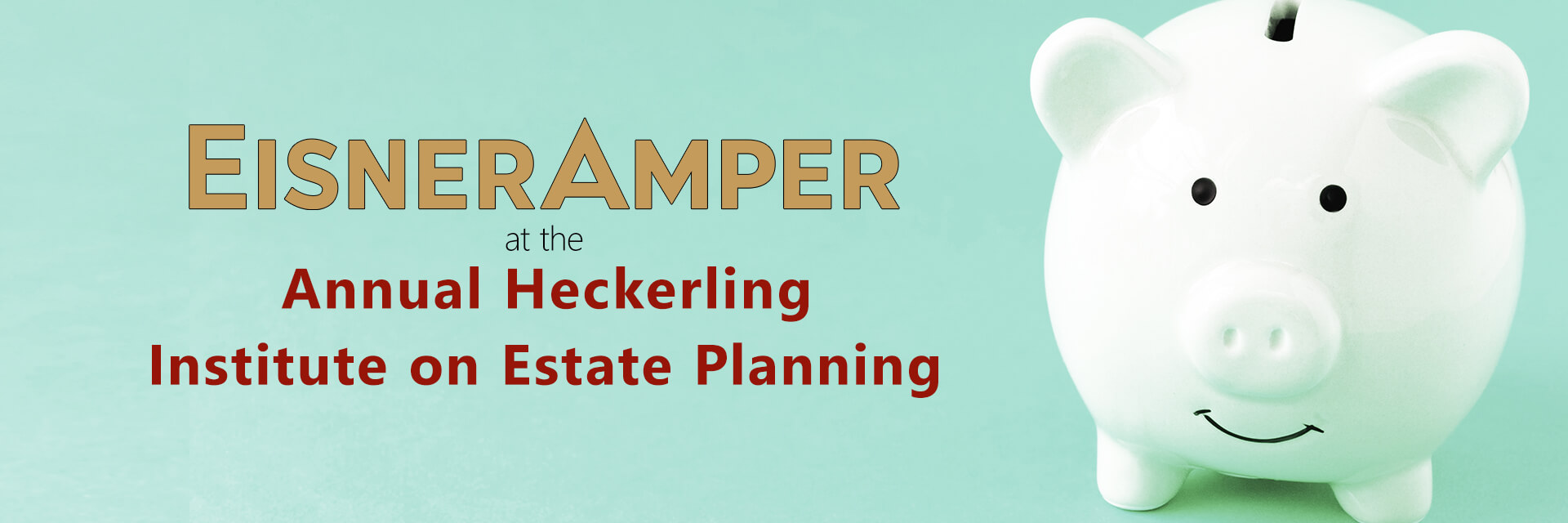
TCJA is the Gift That Keeps on Giving for Wealth Planning – at least until 2026
- Published
- Dec 12, 2018
- Topics
- Share
6 Tips for Seizing the Moment
The wealth planning landscape one year after the enactment of the 2017 Tax Cuts and Jobs Act (TCJA) continues to offer opportunities—if you know where to look.
Exclusion and Exemption Increases Raise Questions
From 2018 through 2025, the gift and estate tax exclusion and generation-skipping transfer tax (GST) exemption have doubled, from $5 million, indexed for inflation, to $10 million, indexed for inflation. Thus, in 2018, individuals could protect $11.18 million from these taxes and, in 2019, can protect $11.4 million (married couples can protect twice these amounts: $22.36 million in 2018 and $22.8 million in 2019). Accordingly, clients should carefully review their wills and irrevocable trusts with their advisors to determine the impact of these increases on their current estate plan – not only with an eye for how best to leverage the increases but whether they may trigger unintended consequences. Thanks to recent IRS guidance, we now know that any of the increased exclusion used for lifetime gifts won’t be clawed back at death, but we don’t know if a potential change in the political landscape will mean that these increases sunset sooner than 2026.
Will this doubling of the gift and estate tax exclusion and GST exemption affect how and when gifts are made to children and grandchildren? For couples with blended families, this can be an even more pressing issue. In addition, will clients decide they need less life insurance, or will they seize the opportunity to front-load premiums on existing trust-owned policies?
Opportunities
This doubled gift and estate tax exclusion and GST exemption offers clients a limited window of opportunity through 2025 to reduce their potential gift and estate tax and GST exposure. Effective ways to use the increased gift tax exclusion and GST exemption include the following:
- Gifting property (preferably high basis assets) anticipated to substantially increase in value to children and grandchildren.
- Gifting property that can be discounted for gift tax purposes, but not estate tax purposes, to children and grandchildren.
- Using spousal lifetime access trusts (SLATs) for gifts so that couples can retain indirect access to trust assets should a need arise.
- Forgiving outstanding family loans or cancelling notes that might exist with a sale to a defective grantor trust.
- Pre-funding life insurance trusts.
- Allocating GST exemption to pre-existing trusts or possibly at the termination of GRATs that are distributable to GST Trusts.
Use It or Lose It
The increase in the gift and estate tax exclusion and GST exemption is the classic “use it or lose it” scenario because of the 2025 sunset. That, coupled with the high stakes involved and the complex planning strategies available, and it becomes imperative for clients to work with a tax advisor who has deep knowledge and expertise in gift and estate planning.
To read more Heckerling content, please see below:
- TCJA is the Gift That Keeps on Giving for Wealth Planning – at Least Until 2026
- Basis After the 2017 Tax Act—Important Before; Crucial Now
- Qualified Small Business Stock: The Next Big Bang
- Getting the 411 on IRC 199A: Just the Facts, Ma’am
- Recent Developments 2018
- Make Your Charitable Estate Plan Great Again
- Having Your Cake and Eating It Too
- Structuring the Tax Consequences of Marriage and Divorce After the Tax Cuts and Jobs Act (TCIA)
What's on Your Mind?
Start a conversation with Karen
Receive the latest business insights, analysis, and perspectives from EisnerAmper professionals.












